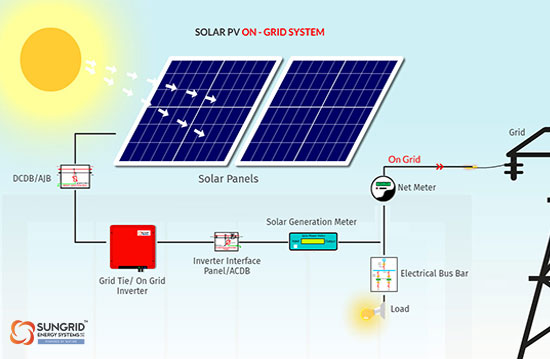Solar PV On-Grid System
These are most common type of PV systems. They are also known as on-grid, grid-tied, grid-intertied, or grid-direct systems. They generate solar electricity and route it to the loads and to the grid, offsetting some of electricity usage. System components comprised of the PV array and inverter. Grid-connected system is similar to regular electric powered system except that some or all of the electricity comes from the sun. The drawback of these battery less systems is that they provide no outage protection—when the utility grid fails, these systems cannot operate.)
- Grid-tied-system
- Increased design flexibility because the system does not have to power all of the home’s loads
- It is less expensive compared to stand-alone or grid-tied with battery backup systems
- It requires the least amount of maintenance
- Encourages energy efficiency
- If the system produces more than the loads need, then the extra energy is exchanged with the utility grid
- Grid-direct systems have a higher efficiency because batteries are not part of the system
- Higher voltage means smaller wire size
- Electricity costs are fixed for the life of your system
- There is no power to the home when the grid goes down
- Paperwork requirements for interconnection, incentives, and rebates
